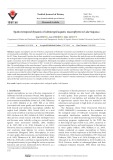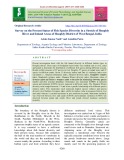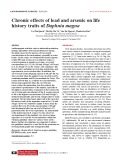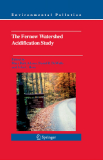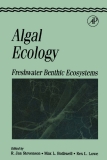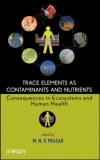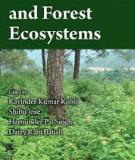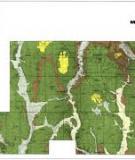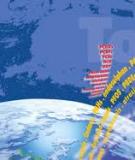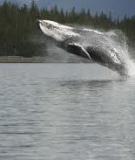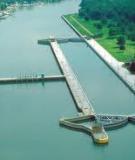
Health of the aquatic ecosystem
-
Aquatic macrophytes are one of the key components of freshwater ecosystems and contribute to ecosystem functioning and environmental sustainability. They are assumed to be an ideal biomonitoring tool in long-term monitoring programs implemented by the EU Water Framework Directive due to their sensitivity to environmental factors. Therefore, this study focuses on the evaluation of the ecological status in Lake Sapanca using macrophyte composition and abundance in order to make future predictions on the health of aquatic ecosystems and to form effective management.
 11p
11p  tudichquannguyet
tudichquannguyet
 29-11-2021
29-11-2021
 9
9
 1
1
 Download
Download
-
Present investigation deals with the fish faunal diversity in different habitat types in Hooghly district. Three types of floodplain water bodies were studied such as river, canal and ponds to determine the distribution of different fish species during different seasons. Results exhibit presence of 87 species in river Hooghly, 57 species in inland water and 47 species in different canals.
 7p
7p  nguaconbaynhay8
nguaconbaynhay8
 13-10-2020
13-10-2020
 8
8
 0
0
 Download
Download
-
Anthropogenic activities such as industrial production, mining, agriculture and transportation are among the main causes for the increase of trace metal concentrations in the environment, especially in water bodies. In this study, we evaluated the chronic impacts of lead (Pb) and arsenic (As) on Daphnia magna, a crucial organism to aquatic ecosystems, at several concentrations (0, 5, 25, 50, 150 and 250 µgl-1 of Pb and 0, 5, 25, 50 µgl-1 of As) for 21 days. The organism’s life history traits, including survivorship, maturation, and reproduction, were recorded daily.
 6p
6p  chauchaungayxua2
chauchaungayxua2
 07-01-2020
07-01-2020
 27
27
 0
0
 Download
Download
-
In the late 1980’s, a considerable amount of research addressing the effects of acidic deposition was begun, much of it related to the Congressionally mandated National Atmospheric Precipitation Assessment Program (NAPAP). As a result of the 10-year NAPAP program, effects on human health, materials, structures, visibility and terrestrial and aquatic ecosystems were evaluated. As a result of NAPAP funded research, negative effects of acidic deposition were documented on freshwater lakes in the Adirondacks and on the red spruce of the Adirondacks and northern Appalachians....
 289p
289p  phoebe75
phoebe75
 01-02-2013
01-02-2013
 51
51
 4
4
 Download
Download
-
Benthic algae have been intensively studied, especially over the past two decades. This intensity has been stimulated by the widespread recognition that benthic algae are ideal indicators of the health of many, if not most, aquatic ecosystems. With this book we hope to synthesize this vital area of research and share its essence with our colleagues and students. We started with an outline of the myriad abiotic and biotic determinants of benthic algal ecology.
 781p
781p  phoebe75
phoebe75
 01-02-2013
01-02-2013
 45
45
 8
8
 Download
Download
-
It is a general belief that the fruits and vegetables that our parents ate when they were growing up were more nutritious and enriched with essential mineral nutrients and were less contaminated with toxic trace elements than the ones that are being consumed by us currently. A study of the mineral content of fruits and vegetables grown in Great Britain between 1930 and 1980 has added weight to that belief with findings of such decreases in nutrient density.
 790p
790p  phoebe75
phoebe75
 01-02-2013
01-02-2013
 54
54
 13
13
 Download
Download
-
Plant species that invade an alien area and outgrow the native vegetation, establishing and increasing their own territory, often lead to negative economic, environmental, and social impacts. Even native species can behave like invasive species by their exponential spread. Similarly, not all non-native species are invasive. Many alien invasive species, however, do threaten the health and integrity of our terrestrial and aquatic ecosystems.
 456p
456p  phoebe75
phoebe75
 01-02-2013
01-02-2013
 67
67
 12
12
 Download
Download
-
Most of the concern about mercury focuses on lakes and other aquatic ecosystems, such as rivers, streams, wetlands and oceans. The levels of mercury found in terrestrial environments are usually not high enough to threaten the health of wildlife and humans. But some aquatic environments favour the transformation of mercury into its more poisonous form — methylmercury — and it is the bioac- cumulation of methylmercury in fish and marine mammals that presents a potential problem when they are consumed by humans.
 68p
68p  saimatkhauroi
saimatkhauroi
 01-02-2013
01-02-2013
 38
38
 2
2
 Download
Download
-
Many of the traditionally sound cultural practices recommended for conventional agriculture are also employed in organic production. In fact, organic agriculture has been referred to as “good farming practice without using synthetic chemicals.”2 For example, planned crop rotations, which have multiple benefits in terms of soil building, plant health, pest management, and enhancing biodiversity, are required in annual organic cropping systems.
 12p
12p  cao_can
cao_can
 02-01-2013
02-01-2013
 62
62
 2
2
 Download
Download
-
As shown later, much of the resultant risk to human populations and the ecosystems upon which they depend comes from the pro- jected extremely rapid rate of change in climatic conditions. Indeed, the prospect of such change has stimulated a great deal of new scientific research over the past decade, much of which is elucidating the complex ecological disturbances that can impact on human well-being and health—as in the following example.
 27p
27p  quygia123
quygia123
 01-11-2012
01-11-2012
 65
65
 2
2
 Download
Download
-
The consideration of an ecosystem approach recognizes the important link between fish community structure and its habitat has been further emphasized in the Strategic Vision Great Lakes Fishery Commission first decade of the new millennium (GLFC 2001).
 139p
139p  lulanphuong
lulanphuong
 28-03-2012
28-03-2012
 64
64
 8
8
 Download
Download
-
The long-term approach to achieving protection is “ecological separation.” A true ecological separation is defined as no inter-basin transfer of aquatic organisms via the Chicago Waterway System at any time – 100% effectiveness. Ecological separation prohibits the movement or interbasin transfer of aquatic organisms between the Mississippi and Great Lakes basins via the CWS. Once established, the impacts of invasive species on ecosystem health are permanent and irreversible.
 112p
112p  lulanphuong
lulanphuong
 19-03-2012
19-03-2012
 119
119
 11
11
 Download
Download
CHỦ ĐỀ BẠN MUỐN TÌM








